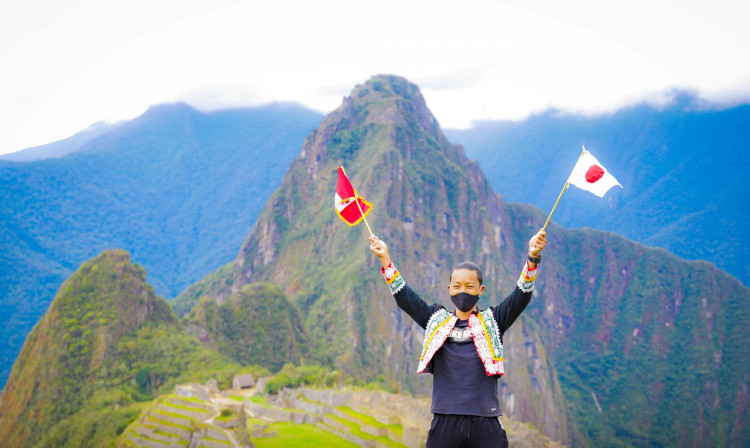Peru's ministry of culture has opened its most popular tourist attraction - Machu Picchu - following months of pandemic-triggered shutdown, but for just one guest: a Japanese man who was stranded in the country because of the coronavirus crisis.
Jesse Katayama traveled to Peru to spend a few days in the country and visit the ruins of the Inca fortress. However, two days before he planned on checking out the historical site, it was closed down, and he found himself stranded due to virus restrictions.
The 26-year old boxing instructor - who dreams of putting up his own boxing gym - entered the abandoned site constructed over 500 years ago on Saturday, becoming the first person to visit in seven months.
Peru's Minister of Culture Alejandro Neyra on Monday said Katayama's entry into the citadel came courtesy of a special request he made while stranded since the middle of March in the town of Aguas Calientes, situated on mountain slopes near Machu Picchu. The country's tourism authority gave Katayama special access, reopening Machu just for him.
"The first person on Earth who visisted Machu Picchu since the coronavirus lockdown is meeeeeee," the Japan Times quoted Katayama as saying on his Instagram account with photos of himself at the abandoned site.
Machu Picchu is expected to reopen to the public at a reduced capacity next month. Tourism authorities said the country is still in the middle of a health crisis and the reopening will be carried out with all the necessary safety protocols in place, CBS News reported.
Since Machu Picchu first opened to visitors in 1948, the site has been shut just once since then, for two months when a flood damaged the railway tracks connecting the citadel to Cusco in 2010.
Peru has had more than 851,000 coronavirus infections and over 33,000 fatalities because of the disease, data from Johns Hopkins University showed.
Machu Picchu is the most lasting heritage of the Inca Empire that governed a large area of western South America for a century before Spanish colonizers arrived in the 16th century.






